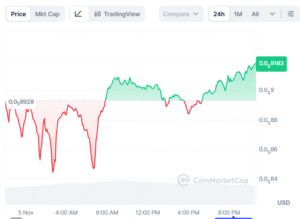
World Bank Warns U.S. Tariffs May Slow South Asia Growth
- World Bank projects impact from U.S. tariffs in 2026.
- South Asia’s growth could slow to 5.8% in 2026.
- No immediate crypto market impact noted.
The World Bank warns that increased U.S. tariffs on Indian exports are projected to slow South Asia’s economic growth, particularly affecting India’s 2026-27 growth forecast.
This economic shift highlights potential geopolitical tensions and concerns for global trade stability, impacting financial markets but with no immediate noticeable effects on digital assets.
The World Bank has released a warning stating that higher U.S. tariffs on Indian exports are expected to hamper South Asia’s economic growth by 2026. The latest economic analysis points towards potential regional risks due to these policies.
The World Bank and the U.S. government are the primary entities involved. The imposition of tariffs, reportedly affecting a significant portion of Indian exports, is expected to alter economic forecasts. Consequently, South Asia’s growth is predicted to decline. Here’s a direct quote from the World Bank:
Higher U.S. tariffs on Indian exports are projected to slow South Asia’s economic growth in 2026.Source
Immediate effects foresee a potential decline in regional economic activities, affecting business sectors reliant on exports. South Asia’s growth rate is expected to slow, as noted in the recent economic projections released by the World Bank.
Financial implications are evident, with regional GDP projections adjusted downward. The political landscape might experience increased tensions due to these tariff changes, potentially impacting bilateral trade negotiations.
Historical analysis indicates that similar tariff increases have led to currency volatility and increased reliance on USD stablecoins. However, direct on-chain evidence for the present situation remains unconfirmed as per primary analytics sources.
Potential outcomes could include shifts in regulatory frameworks or adjustments in technological trade solutions. No significant crypto market implications are recorded, yet historical trends suggest volatility in such macroeconomic conditions.








